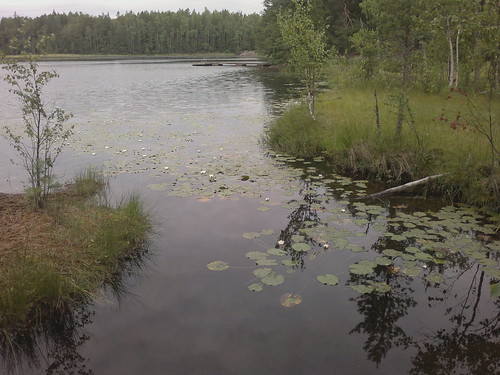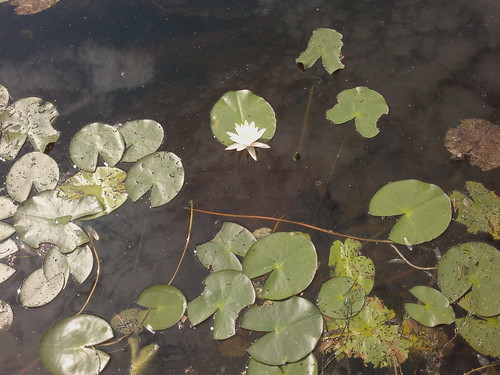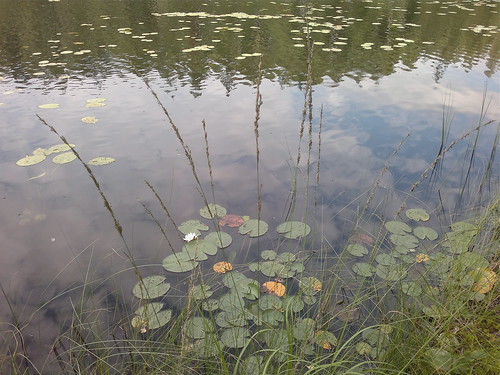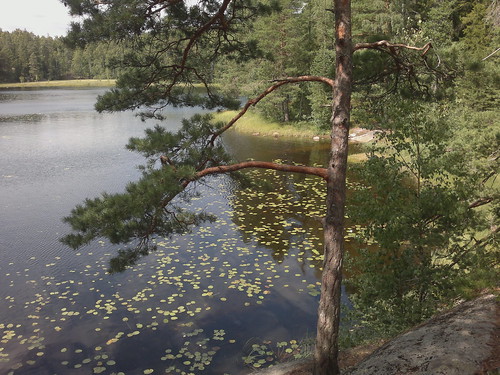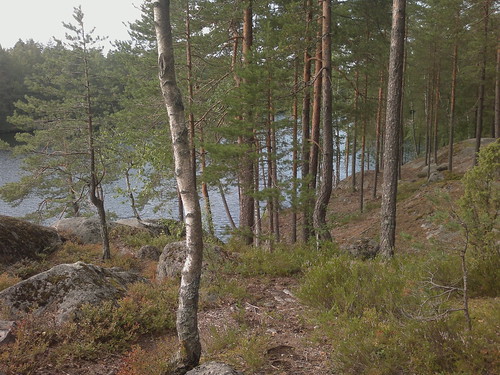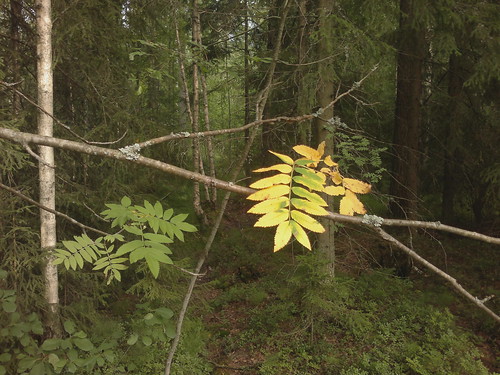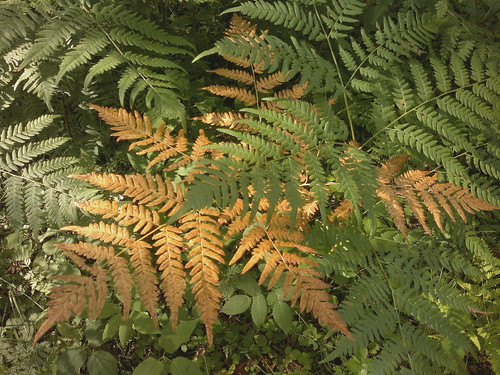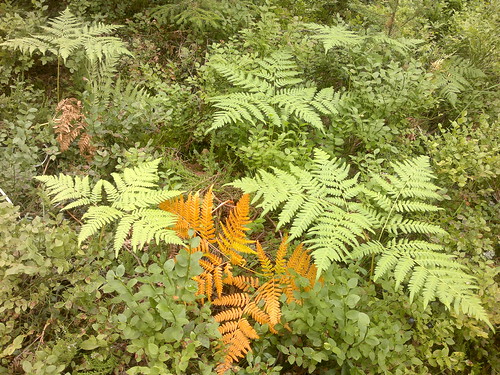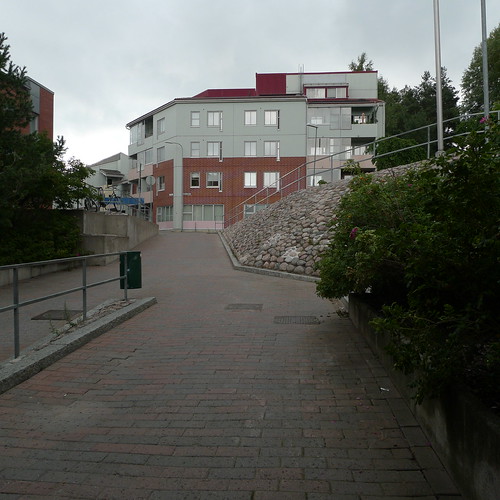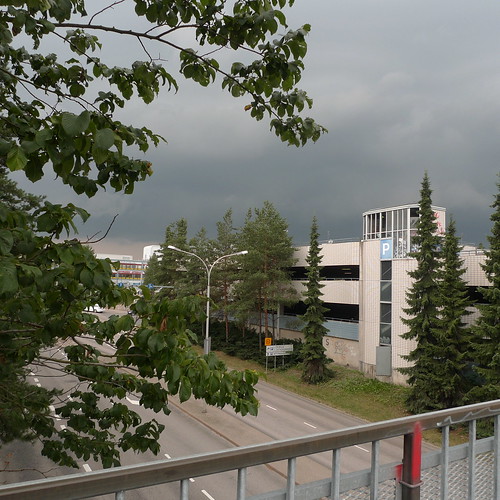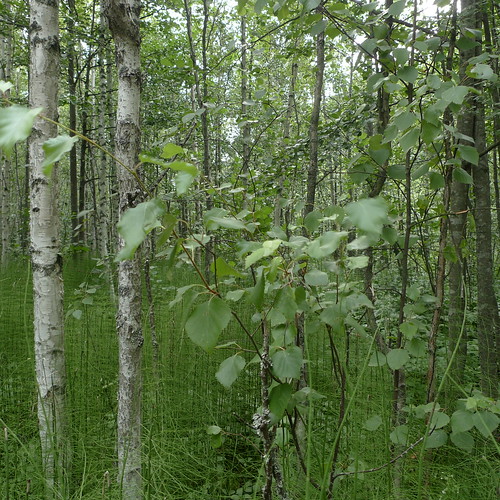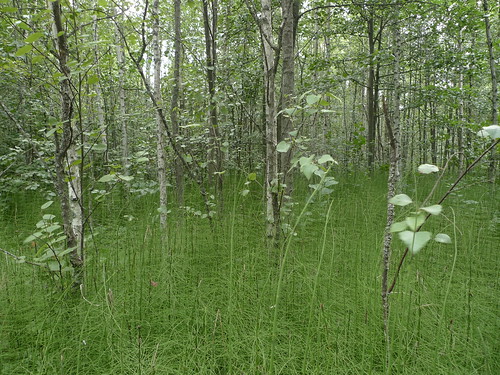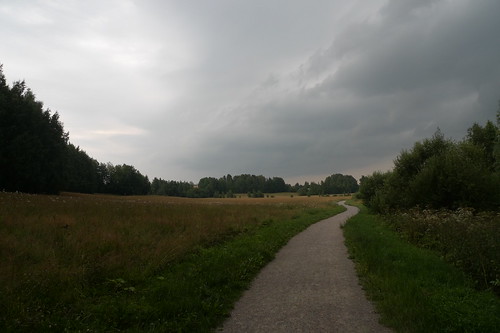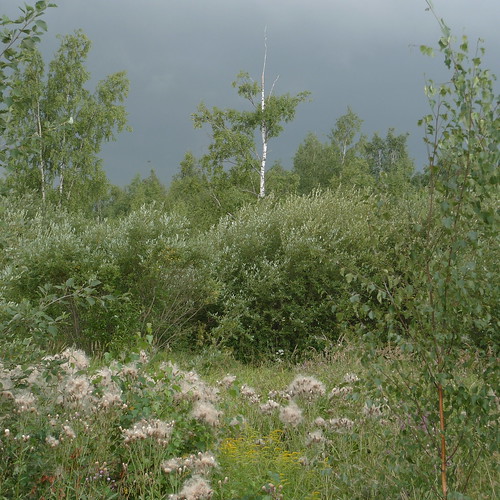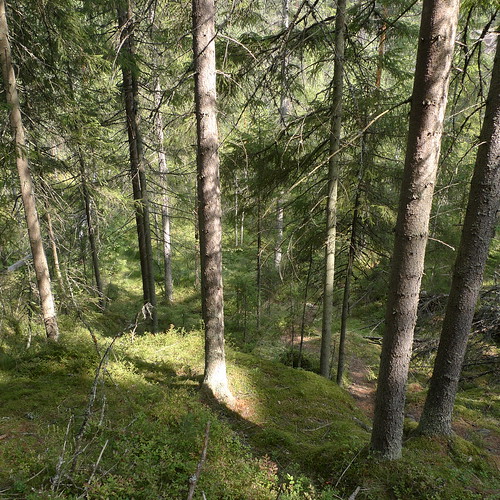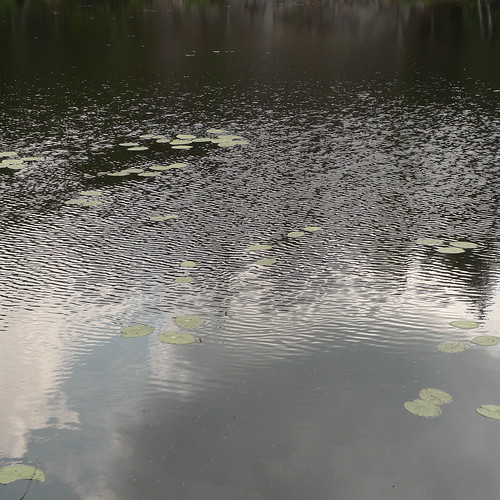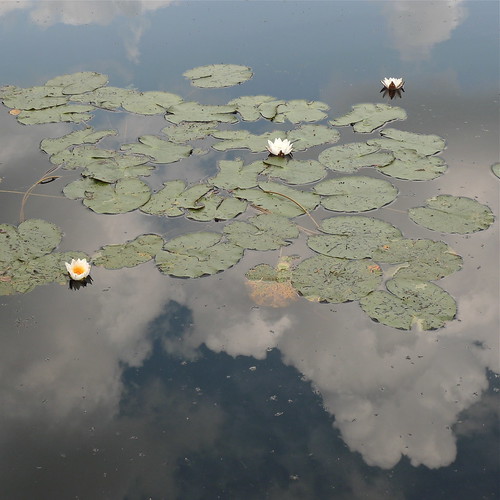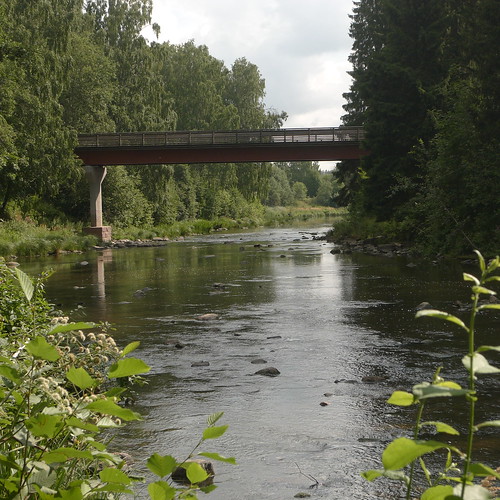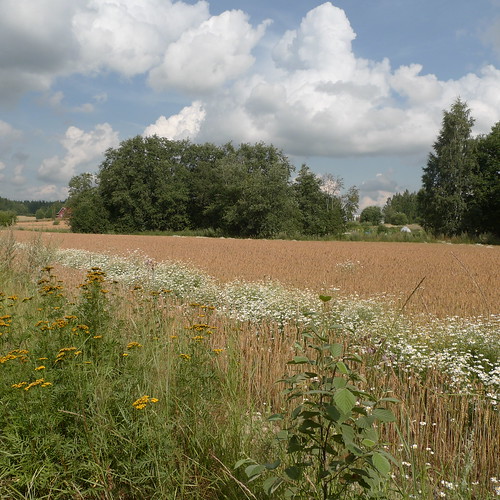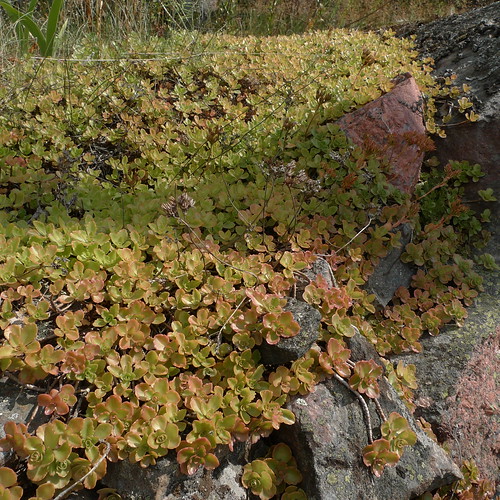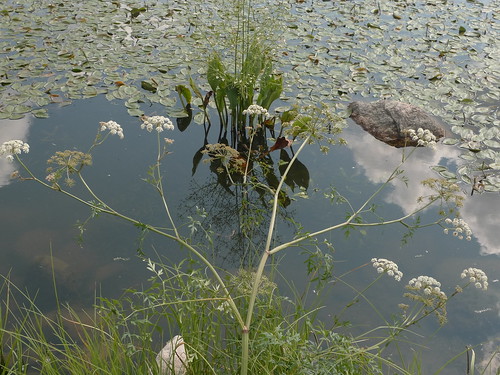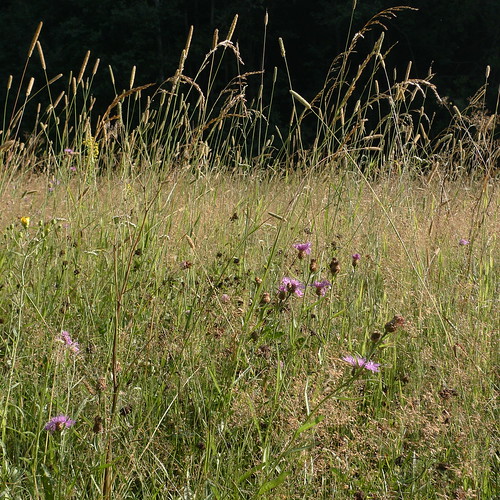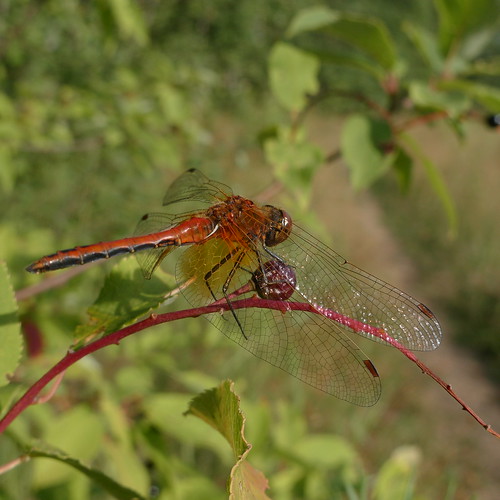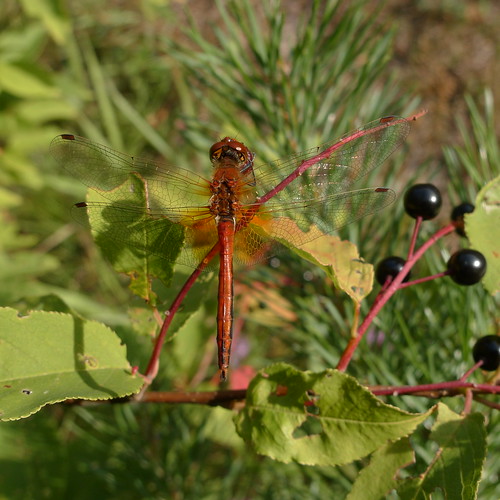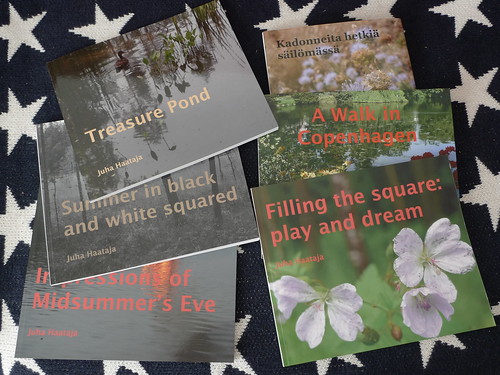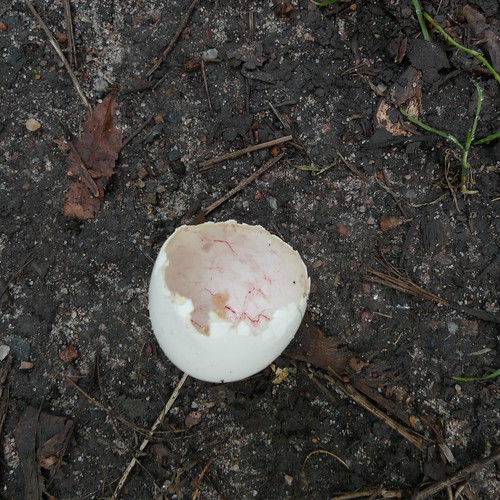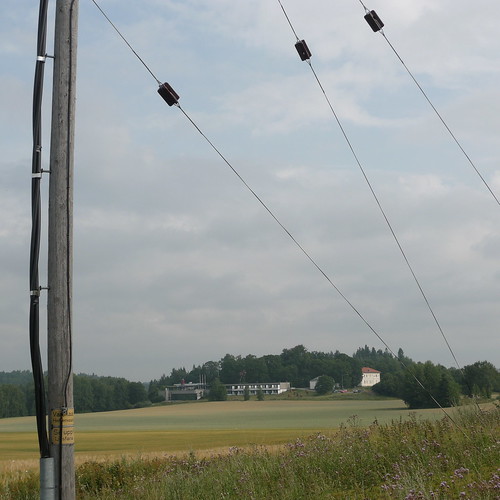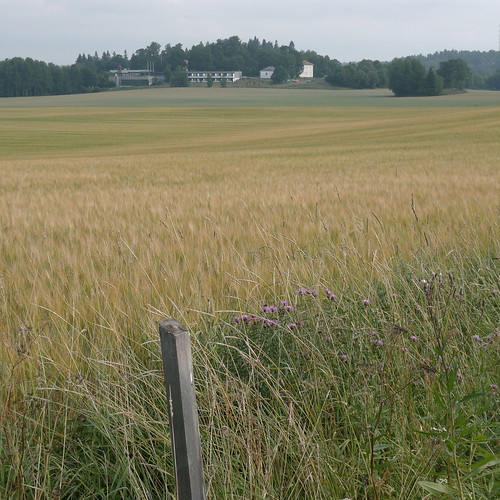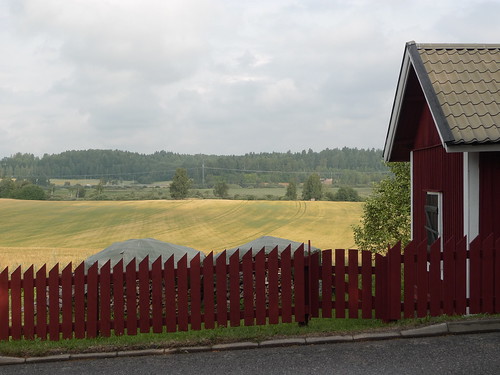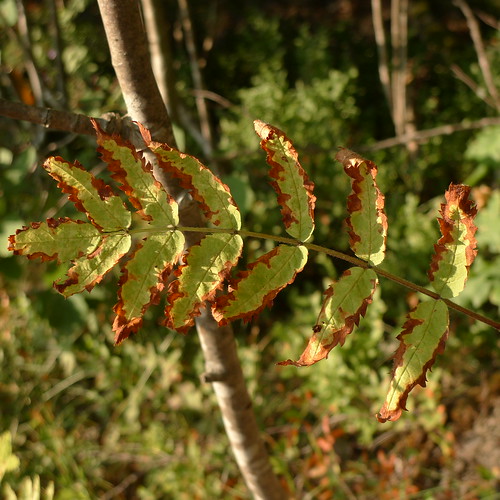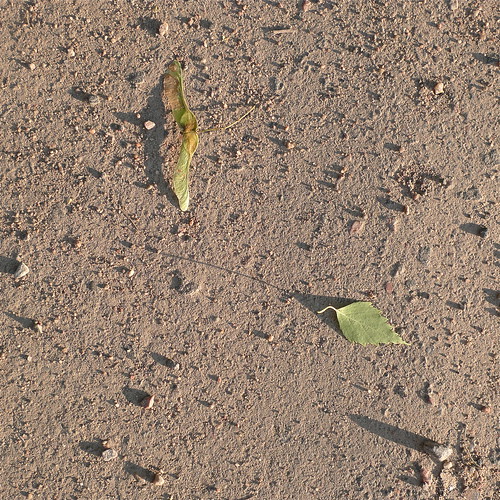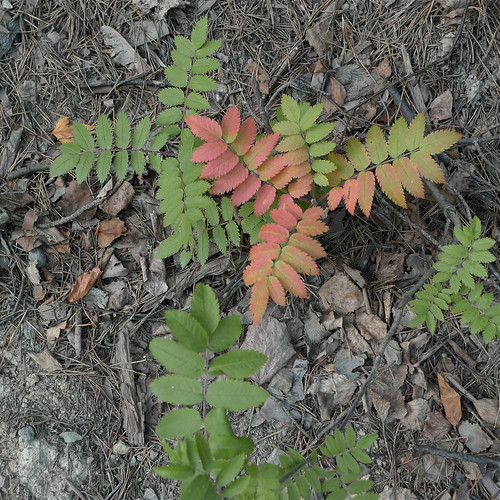Today we walked around the Myllyjärvi lake, one of the several lakes with the same name in Espoo. Weather was nice, cool enough for walking, clouds preventing excessive heat, and wind kept mosquitoes away.
I have continued testing the Nokia E7 camera after the LX3 broke in a thunderstorm. In three days I have taken about 400 photographs with the E7. In some ways the E7 camera is great indeed: it starts up fast (as fast as the LX3), and shoots instantly (there is no focusing delay).
The E7 camera is also very energy-efficient. Even though the battery on the E7 doesn't usually last more than three days (and in normal work use only two days), using the camera doesn't seem to take much juice out of the battery. Several hundreds of photographs can be taken with one charge, at least using my way of shooting: start up the camera, take a couple of photographs in succession, shut down the camera.
Another marvel is the Bluetooth connectivity of the E7. I have been using Bluetooth to transfer hundreds of photographs wirelessly, as I don't have the cable at home, and this hasn't exhausted the battery. I remember the time when transferring photographs wirelessly used to dry up camera phone batteries almost instantly.
But lets go to the bad parts, or maybe ugly is the word. I thought that the E7 is a fixed-focus camera, but it is not so. It is a so-called EDoF camera (Extended Depth of Field).
This is what it means: "EDoF works by using an asymmetrical lens that has the capability to focus objects from different distances, depending on which parts of the lens the various light 'rays' strike, on the same sensor. Internally, this naturally results in an unholy blurred mess, but by using chromatic tricks (using the different optical characteristics of different colour frequencies [...]), by knowing the exact optical properties of the asymmetries in the lens and by using a healthy dose of very clever enhancement electronics, the mess is largely (but not completely) cleared up to produce images that, to the naked eye are pretty clear, whatever the subject, in good light."
The camera module itself does the EDoF processing trick, and only after this happens the the normal image processing pipeline of digital cameras.
In mathematical terms, the optics of an EDoF camera generate an inverse problem in imaging. This happens to be an ill-posed problem - there is no unique solution - so what has to be done is to use a regularization method. In this case it means that the camera electronics have to somehow "guess" what kind of image is hidden in the blurry mess, and generate a result which is somehow optimal in terms of the given constraints.
So, in a way, the E7 camera is the ultimate non-artist's camera: to be able to produce a photograph the camera electronics have to be able to guess in advance the type of the photograph to make sense of the mess. One could even say that only photographs of known types (of fitting into known categories) can be generated with this camera.
Here is some discussion about this: "So objects at different distances have a dynamic influence on the image processing carried out in each individual image. So each image is processed according to the content of the image rather than some generic image processing algorithm."
However, the camera seems to consume very little energy, so this algorithm can't be very complicated. Computationally it is probably comparable to commonly used deconvolution algorithms. So, a very clever thing, but I'm not sure who cares about it - is there a market for such cameras?
As a sidenote, I haven't found much solid facts about the focal length, sensor size, or any other specs of the E7 camera. Several sources have said that the lens is f/2.8 - the same as on the Nokia C6 - which seems to fit my experiences. One source claimed a focal length of 5.3 mm, but I'm not convinced.
Anyway, a fixed length camera with f/2.8 optics and a small sensor probably would normally have a depth of field of about 1.5 meters to infinity, so the EDoF trick doesn't sound extremely impressive, producing a DoF of 0.5 meters to infinity. But in engineering terms this is of course a feat.
What is good about the camera is the fast response, as there is no need for focusing. And the lens is very, very durable, because there are no moving elements.
But in other ways, I don't think this type of camera will be a great success story. Especially as there seems to be quite a lot of compromises needed due to the ill-posed inverse imaging problem.
I think this also explains why some photographs I have taken with the E7 have looked very different from the original view, almost as if someone would have split the image into pieces and performed random surgery on them.
This seems to happen when there are great differences in brightness and objects are randomly distributed either close or far from the camera. At first I thought these were jpeg artifacts due to noise, but they appear even when the sensitivity is set to the lowest setting.
So, if you are interested in taking chiaroscuro photographs in a forest, you may get a surprise with the E7. (Another problem is the limited dynamic range - it is very limited indeed; you have to sacrifice either the dark or the light.)
Also, red color seems to generate problems if there are small pieces of red-colored stuff with varying brightness. Large areas of red don't seem to pose a problem. I noticed this when red shirts of children happened to be in the photograph.
One question which I don't know the answer to is whether the shooting mode of the camera affects the type of regularization method used in the camera module. Would using "landscape" mode produce a different photograph than using "portrait", as an example. Or are these modes affecting just the later stages of image processing?
Sunday, July 31, 2011
Nokia E7 camera - a techological marvel, for non-artists
Saturday, July 30, 2011
Seeing non-square
Today I continued to use the Nokia E7 for taking photographs. I realized there is a way of storing default settings in the "M" mode of the camera phone. It is not M for manual, but at least one can tailor something: select scene mode (landscape), sensitivity (low), exposure compensation (-0.5 EV), use of the flash (no), contrast (normal) and so on.
Here are further E7 samples, this time from the Luukki forests, where there were sweet berries to be tasted.
And what will be the next camera after the LX3, that was the question - or was it?
One thing was missing this time: the urge to compare different cameras to find the absolutely best one. Gear-shopping can be a source of enjoument in itself, and when the LX3 broke, I guess here would have been an excellent opporturnity to indulge oneself. But no.
I have a tentative date with the LX5 next Monday at end of day. Also, a spare battery is on the way - not a Panasonic original but a copy, less than half the price.
But I must confess spending some time online reading about the LX5, thinking about the differences between the LX3 and the LX5. The differences shouldn't be that great, but there are some, such as the control wheel.
I have already a plan what to do when I get my hands on the LX5: charge the battery (and start charging the spare one), go through the settings (aperture priority, film mode etc. etc.) and store them in C1, and then start experimenting. I won't be reading the LX5 manual at first - provided that everything works as planned.
And it seems that there is no need to update the firmware, as there doesn't seem to be any updates available. I guess the LX5 is quite a mature camera.
But until then, I have to cope with the Nokia E7, which isn't so pleasant. I miss composing in the square aspect ratio; it is something which has grown into me. Now I have difficulties. All I see are squares.
Friday, July 29, 2011
Taking photographs without the Panasonic LX3
The LX3 which got broken yesterday stays broken. We went today to the Siikajärvi forests, for a walk and to eat blueberries, and I tried to use the Nokia E7 mobile phone for taking photographs.
Getting the exposure right is a problem, and I don't much like the overall appearance of the photographs. But here are some samples. The conditions for taking photographs were good: a thin cloud cover softening the light, and wetness due to rain which had saturated the colors in the landscape.
Thursday, July 28, 2011
Thunderstorm killed the Panasonic LX3 - after 203,318 photographs
Oops... I was today riding a bicycle in a thunderstorm, and that seems to have broken the Panasonic LX3.
Above you see the last photograph taken with the LX3, number 203,318. It wasn't yet raining much, but soon after a heavy downpour started, accompanied by thunder and lightning.
When I returned home, the LX3 seemed to be normal, but after a while it started acting up. First came the message "please switch the camera off and on again", and after some attempts, there was the message "system error (focus)" on the screen.
The lens does not retract any more, and the camera gets stuck when trying to start it up, always giving one or the other of these error messages.
So, that was the end of the LX3 - a bit less than three years and a bit more than 200,000 photographs. Certainly more than the warranty covers!
And I just bought a new battery for the LX3. In fact, the first charge of the battery was just running out. Not much use for this investment now.
Currently my only camera is the Nokia E7, which I don't like much as a tool for photography.
So, what to do, what to do...
Caught in a thunderstorm
This morning I looked carefully at the weather forecasts and weather radars, and thought that there would be some time until the rain front would get here. So I went for a bicycle ride.
However, the rain arrived - together with thunder and lightning - when I was quite a distance from home. I thought it would pass quite soon, but I kept on getting more and more wet.
In the end it was raining so hard that I had to spit out every few seconds the water that got into the mouth when inhaling. And at home I had to pour water away from the bicycle shoes.
Well, at least the rain wasn't too cold; it was refreshing, a warm summer shower.
Wednesday, July 27, 2011
Rescuing Beautiful Demoiselle
We went today for a walk - and to eat blueberries - to the Luukki forests, visiting one marsh (Svartmossen) and two lakes (Vääräjärvi, Halkolampi) along the way. Our daughter rescued a Beautiful Demoiselle (Calopteryx virgo) which had fallen into the water, having problems with a wing.
Tuesday, July 26, 2011
On a bicycle, to Pitkäkoski rapids
I have ridden the bicycle only a couple of times during the last two weeks. Today I made a longer, 100 minute ride, with some stops for taking photographs. I went to look at the landscape along the Vantaajoki river, and to the rapids at Pitkäkoski. It was a somewhat hot day, but there was some wind, and of course on a bicycle you get free cooling anyway.
Here is a sort of photo essay about the ride; I enjoyed it although I should have remembered to take some water for drinking.
Monday, July 25, 2011
Getting late in the summer
Here are six photographs taken on a late afternoon walk in nearby forests and fields. It is getting late in the summer, and that shows in the bugs and plants.
Printing the SoFoBoMo photo book via Blurb
Last week I discussed my SoFoBoMo 2011 project, a photo book titled Treasure Pond. It is available at the SoFoBoMo site, and also as a Blurb version.
In the above photograph you see all the photo books I have made so far using the Blurb service. If you want to know more about making photo books, see my instructions page.
It took some time for the printed Blurb book to arrive. I got the shipping confirmation on Monday, July 18th, and the book arrived on Friday, July 22nd. Last year the delivery was much faster - I got the shipment the next day after receiving the shipping confirmation. I guess the "priority" delivery isn't so priority after all (it is the cheapest option).
The quality was as expected, not big surprises. Some things need to be improved next time, if there is one, for example I forgot to check the placement of the matrix barcode on the back cover, and it was overlapping with the last character of the text there. And the placement of the title text should have been a bit further away from the gutter.
The image quality was good - I was using the premium "lustre" option - and there were no physical blemishes in the printed book.
The photographs of course could have been better; maybe I should have deleted a dozen more. However, I have often felt a bit of disappointment after looking at the printed copy of the finished work.
It is good to let the book rest a bit and only then make an appraisal. The SoFoBoMo books from last year seem now much better than they felt right after the event.
Anyway, I like the Blurb service, as the output seems to be of reliable high quality. If I were making individual prints then there would be room for much more finetuning regarding the print quality, but for making a photo book, the Blurb service works fine. (Especially given my radically simple jpeg workflow.) And despite that there was a little bit of extra work needed with Blurb, I think it isn't such a big deal.
Sunday, July 24, 2011
Web of life
Here are two photographs, taken today in Pirttimäki forests. We went for a walk with the family - and enjoyed eating blueberries, raspberries and wild strawberries.
The Finnish connection to what happened in Norway
The New York Times wrote about the Norway shooting and bomb attack, discussing the 1,500-page manifesto which the suspect, Anders Behring Breivik, published before the deeds.
The document appears to be available through Google, and in the foreword the author writes of planning the deeds for several years. He sent the document to "7000 patriotic Facebook friends".
Breivik cites the Finnish politician Jussi Halla-Aho, of the nationalistic "Basic Finns" party (Perussuomalaiset), on the topics of immigration and Western culture. As an example, he offers this quote from Halla-Aho: "It is because the moral and ethical values of Western man have made him helpless in the face of wickedness and immorality."
It seems that multiculturalism was a big fear for Breivik. But what it was that lead him to such terrible actions, I'm not sure if it ever can be understood. Anyway, it seems that when you are afraid of "the other", and get involved with similarly thinking people, this can lead to unimaginable actions.
But this makes one think. The Christian fundamentalistic terrorism and the Islamistic terrorism are almost like the same, they are mirror images of each other, but hating and fearing otherness. Does there remain any room for discussing the common world we live in, to appreciate the life on Earth?
Saturday, July 23, 2011
Norway in mourning
What happened in Norway yesterday makes one silent. Bombing in Oslo, and youth camp massacre on Utoeya island. Suspect, Anders Behring Breivik, is said to be right-wing fundamentalist Christian.
Our two eldest daughters returned from a six-day youth camp yesterday, so this was a thing which hit close. We have had two school shootings in Finland, but nothing like this what happened in Norway. Could it happen here also?
As the details are still unconfirmed, it is hard to know what really is the truth about events in Norway. But what seems to be related to this terrible tragedy is the issue of fundamentalism, of seeing the world from one viewpoint only. Of not being able to meet otherness.
I wonder how things will develop from now on. Are we going to be even more limited in our world-view, even more scared of meeting other cultures, other ideas, others? Censorship, book-burning - it this the future for us?
Update: NYT writes about this.
Posting number 1500 at Light Scrape
So the time goes: this is posting number 1500 here at Light Scrape. I think I have learned a lot during all this, but somehow I feel that there is all the time more and more to learn. It never ends...
And what have been the most popular subjects? I made a list of the top ten most popular postings, and - this is probably not a surprise - eight of them discussed gear-related topics, especially the Panasonic LX3. The other two touched on gear as well...
So, gear seems to be THE topic. However, I have grown less and less interested in it. Is this a dilemma? Maybe it isn't.
